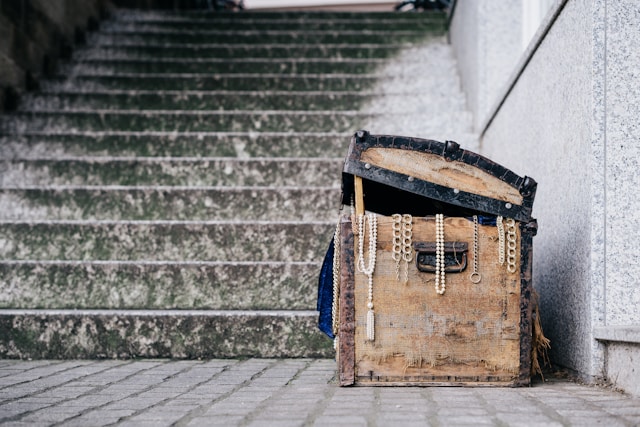
Mem Moment
Moishe Moment | The Miracle of Do No Harm/Treasure Buried in the Ruins

Shabbat HaGadol “The Big Shabbat” By Rabbi Loren Berman, Jewish Life Specialist
We’ve finally arrived at Shabbat HaGadol – the GREAT Shabbat – which is the Shabbat before Passover. Why is this Shabbat greater than all other Shabbats? Our tradition teaches that a “Nes Gadol” (great miracle) took place on this day, which is why it’s called Shabbat HaGadol. Okay, so what was the miracle? Hint: It wasn’t any of the 10 plagues. Rather, it was that on the Shabbat before the exodus, each Israelite family took a lamb from the Egyptians, which they tied to their bedposts for four days, and then offered it as a sacrifice to God (the paschal lamb). Either because the lambs stayed quiet or some other intervention, the Egyptians didn’t attack the Jewish people. The end. What makes this miracle so great? My teacher, Rabbi Simcha Krauss (of blessed memory), taught the following: this incident with the lamb was so great because it is the only miracle where nobody physically suffered or died – neither the Israelites, nor the Egyptians. During the 10 plagues and splitting of the sea, for example, death and devastation was brought to humans, livestock, and nature. Not so with this miracle. On this Shabbat HaGadol, on this Shabbat of Great Miracles, may we pray for a Nes Gadol, a Great Miracle, in our own time – one that liberate us with the least death and suffering possible.Parashat Metzorah “Afflicted One” By Dimitry Ekshtut, Rabbinic Educator, Based-In Harlem
Much of Parashat Metzorah is devoted to the intricacies of diagnosing and cleansing oneself from tza’arat. Commonly mistranslated as leprosy, tza’arat is better understood as a fundamentally spiritual malady, for if tza’arat was merely a natural skin infection, how could it appear not only on one’s body but also on one’s clothing, possessions, and most strangely, on the walls of one’s home?
Regarding tza’arat of houses, God states to Moses and Aaron, “When you come to the land of Canaan, which I am giving you as a possession, and I place (literally, “give”) a lesion of tza’arat upon a house in the land of your possession…” (Vayikra 14:34). Rashi, the famed medieval French rabbinic commentator, is puzzled by the use of the word “give” in this verse. Giving, especially from God, is generally associated with good, and one may find it difficult to see any good coming about from a lesion on one’s home that may require evacuation, quarantine, and possibly even demolition. Quoting a Midrash (Vayikra Rabbi 17:6), Rashi explains that the verb “give” hints at a roundabout blessing of sorts. The previous inhabitants of these homes, the Amorites, hid away their treasures of gold inside the walls of their home over the course of the Israelites’ forty years of wandering in the wilderness, to keep these treasures away from them. When the Israelites eventually conquer the land, discover a tza’arat affliction on one of these homes, and therefore need to demolish it to cleanse the home of tza’arat, they will then discover these hidden treasures. As such, the initial setback of the tza’arat infection turns into a blessing in disguise.
We do not always know from where our blessings or good fortune may come. Sometimes, good can emerge even from what appears at the time to be our very misfortune. Our experience of life is so bound to the present that we cannot easily comprehend in real time the ultimate outcome of what befalls us, whether seemingly good or bad. Even in trying moments, we have the opportunity, should we choose to take it, to search for the treasure that may be buried just beneath the ruins.
Have you ever experienced a dramatic reversal of fortunes? If so, how did your relationship with your initial response to calamity change over time?
How do we hold the paradox of tragedy or challenge mixed with the joy and relief of redemption?
